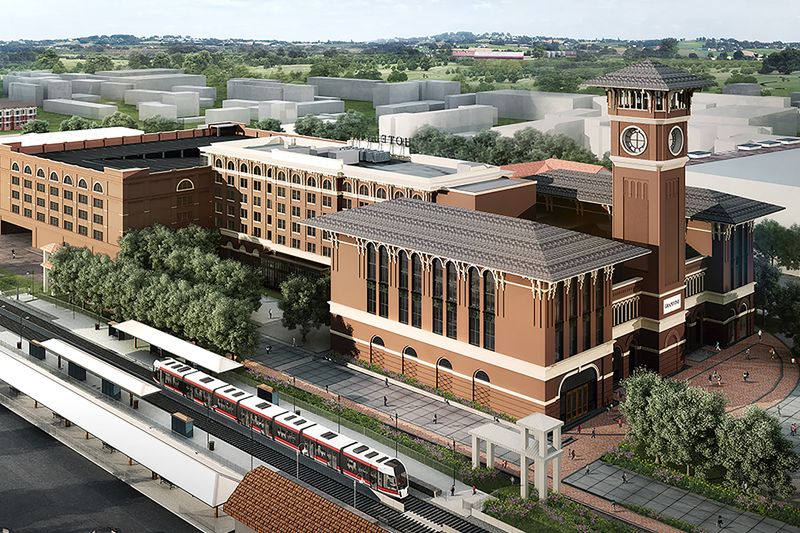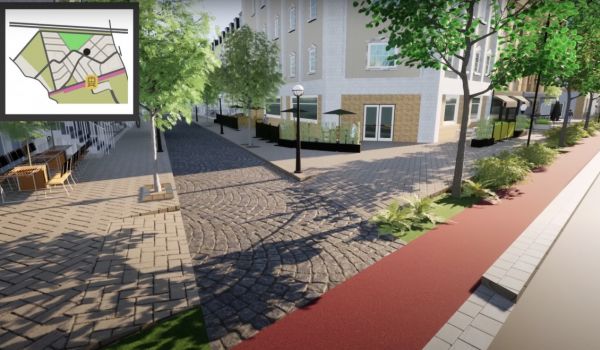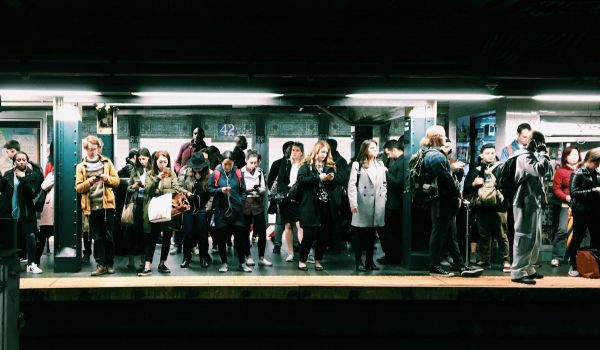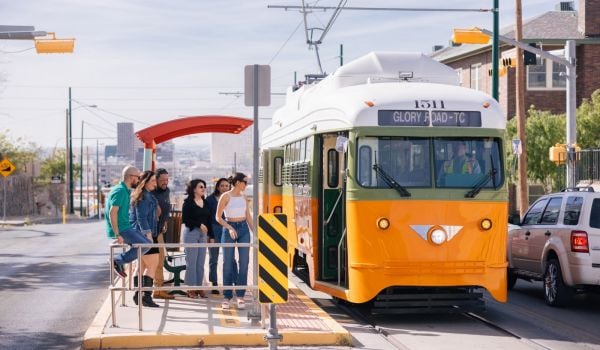Each year, the Federal Transit Administration doles out more than $2 billion to help build new rail, streetcar and bus rapid transit systems through its Capital Investment Grants Program. Much of that money is distributed as part of the “New Starts” program, which gives grants for projects that cost more than $300 million in total, or which are seeking at least $100 million in federal money. In order to justify that much investment, cities and regional transit authorities need to show that the project will improve mobility, reduce congestion, and produce environmental and economic-development benefits. A new bill from Rep. Scott Peters, a Democrat from San Diego, would add housing to the list.
The Build More Housing Near Transit Act was introduced by Peters this month. It would amend the rules for New Starts funding by requiring applicants to create “housing feasibility studies” showing the opportunities for more housing production in the area around the project, and by encouraging cities seeking funding to adopt land-use plans that accommodate more housing. Peters has been working with various advocacy groups on the legislation since the spring, according to this office.
“The goal of this bill it to use the leverage of federal funds to get cities to make affordable housing near transit projects a priority,” Peters said in an email response to questions. “It’s the right thing to do to meet our housing needs and to reduce air pollution from cars.”
The findings section of the bill refers to a national shortage of housing, the “underproduction” of 7.3 million needed housing units since 2000, and the severe burden of housing costs for people living in poverty. Low-income families are often forced to endure long commutes to get to work, but those who live near public transit have lower cost burdens, the bill says. It also notes that transit ridership is higher when there is more housing near transit stations. New housing built near stations “should target middle-income families, particularly those with 60 to 100 percent area median income,” it says.
“As we laid out in the findings section of the bill, we wanted to emphasize the importance of building housing for low-income and middle-income families, who benefit the most from transit-served areas,” Peters said. “This number isn’t prescriptive; we know that transit agencies aren’t the ones approving particular developments, but we included the number to signal to cities and local jurisdictions that we need to focus on building affordable housing.”
In addition to Peters, the bill is co-sponsored by Democratic representatives Denny Heck of Washington, Donald Payne of New Jersey, and Katie Hill of California. It also has two Republican co-sponsors: Cathy McMorris Rogers of Washington and Mike Gallagher of Wisconsin. The legislation has also been endorsed by a range of independent groups, including the American Planning Association, Enterprise Community Partners, Habitat for Humanity, the National Multifamily Housing Council and the Regional Plan Association.
The legislation is also a priority for Up for Growth, a D.C.-based nonprofit that lobbies for policies that increase production of affordable and market-rate housing. The group is membership-based, with a range of housing advocacy and “social justice” groups that pay dues, but the bulk of its funding currently comes from large real-estate trade organizations and individual developers and property owners, according to Mike Kingsella, the group’s executive director. The Build More Housing Near Transit Act is one of a handful of bills the group is currently pushing that are aimed at advancing a pro-growth agenda, Kingsella says.
“We’re singularly focused on eliminating barriers of all kinds to housing for all people,” Kingsella says.
According to Kingsella, the way the FTA funds projects through the New Starts program hasn’t been creating dense housing projects near transit stations, where they can offer residents better commutes and reduce vehicle miles traveled. One of the problems is that the FTA looks at each factor in isolation, Kingsella says. A project might score high if it appears to show potential for economic development, even if the potential is just based on land-use regulations and not an actual market for development. Adding a housing feasibility study into the mix would let officials judge how likely a project would be to support housing production based on a range of factors, Kingsella says. And it would give city planners and transit planners a better opportunity to coordinate.
While California state legislators have tried and failed for multiple years to pass bills that would upzone areas near transit, Kingsella believes the federal approach to the problem has more of a chance. The federal legislation is based more on incentives than previous efforts in California that have sought to force cities to zone for dense housing near transit nodes.
“The beauty is that we are trying to craft the federal evaluation criteria for these projects so that FTA is able to reward and incentivize [more housing production] in these transit areas, but not prescribe the approach,” Kingsella says.
Peters’ office acknowledged that the bill is not likely to pass as a standalone piece of legislation, but could be incorporated into a larger transit bill next year. Kingsella says the bipartisan support for the bill shows that there are some ways for the federal government to support better housing development.
“Nothing in Washington, D.C., and Congress comes easy, but what I do believe is there’s a political window that is open right now,” Kingsella says. “There is bipartisan interest in the discourse around eliminating barriers to housing.”
This article is part of Backyard, a newsletter exploring scalable solutions to make housing fairer, more affordable and more environmentally sustainable. Subscribe to our weekly Backyard newsletter.

Jared Brey is Next City's housing correspondent, based in Philadelphia. He is a former staff writer at Philadelphia magazine and PlanPhilly, and his work has appeared in Columbia Journalism Review, Landscape Architecture Magazine, U.S. News & World Report, Philadelphia Weekly, and other publications.
Follow Jared .(JavaScript must be enabled to view this email address)














